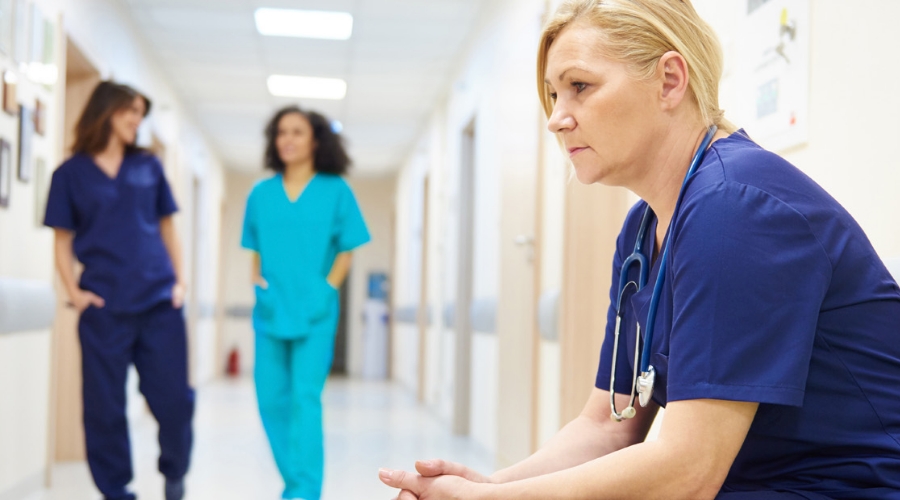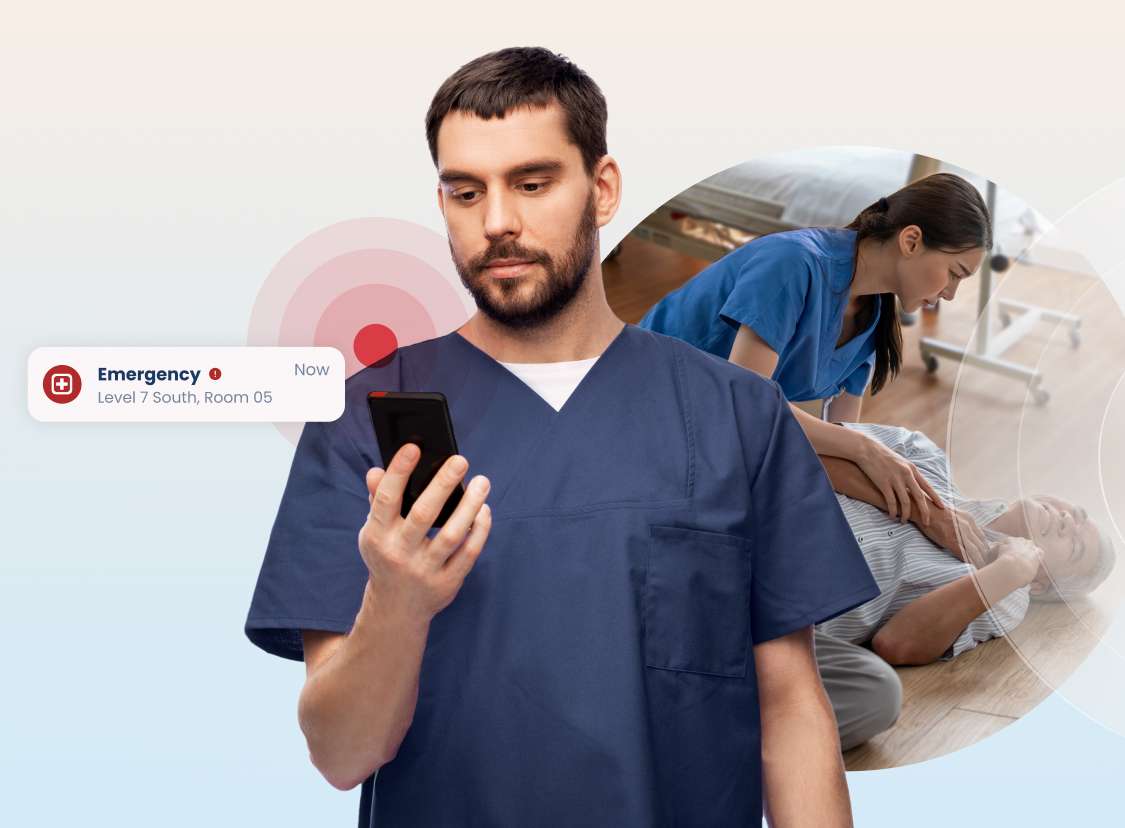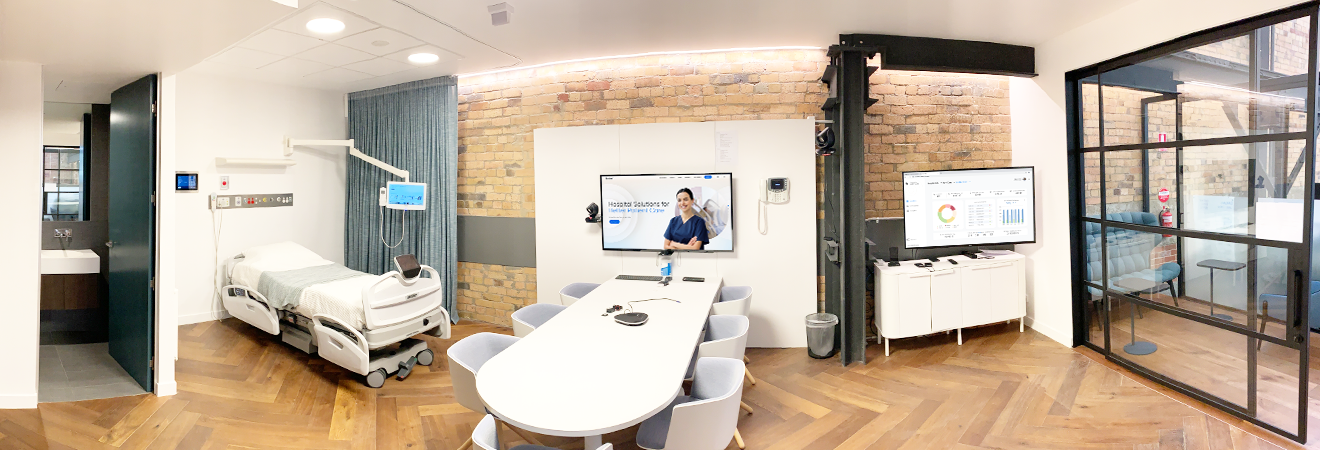
Share:
Opinion piece by: Dr. Vickie Knight – PhD, MHScEd, BN, Clinical Services Executive, Rauland Australia.
The need to protect nurses and other healthcare workers has accelerated as a direct result of an increase in occupational violence, an increase in mental health issues and strained healthcare systems struggling to meet demand and the push to provide more services in the community in non-healthcare related places such as people’s homes.
More and more healthcare workers are calling for technology that can continually protect them no matter their location, such as mobile duress. Duress needs to be mobile as workers may not be able to reach fixed alarms and responders need to know where they are if they are on the move.
Violent incidents are on the increase
Occupational violence against healthcare workers is a global problem with a systematic review conducted by researchers Liu et al showing a whopping 61.9 per cent of workers reporting exposure to occupational violence. The same researchers also found that healthcare professionals are more vulnerable to occupational violence than people employed in other occupations¹.
Further they found that compared to European countries, Australasia and North America had higher rates of violence committed by patients in the workplace but suggested this difference may be related to under reporting in European countries.
The same researchers also found incidents of physical violence were highest in mental health and emergency department settings and in nurses and doctors, those working in urban settings and clinical staff working longer hours¹.
Mobile duress can save lives
Hospitals are increasingly turning to mobile duress as a way of increasing protection for healthcare workers. Rauland Australia has a smartphone personal duress app and associated critical messaging solution. The mobile duress solution allows for room level accuracy and tracking of the healthcare worker if they are on the move. It uses RTLS tracking in the community to pinpoint the location of the device and therefore the healthcare worker. It also has a fall alert so that if a worker falls a duress alarm is automatically triggered.
The solution also reassures the professional that the alarm has been sent and a response team has been alerted. The solution ensures that a pre-defined responder team has been formed and it will quickly escalate the call to others to ensure that help is sent immediately and accurately. Additionally, the reporting functionality of the solution allows for conducting a full audit into the duress response, including details around the location of the responders at the time of the alarm, that can assist in the development of efficient responder team processes and protocols so that staff safety is always given priority
Prioritising health worker safety
Mobile duress technology provides a layer of protection to healthcare workers so they can work with confidence, knowing that should anything happen they have the support they need. By using such solutions that provide quick response time and accurate location information, which can be invaluable in a crisis, healthcare providers can ensure their staff have a mechanism in place that is always looking after their safety no matter where they are. Providing peace of mind to healthcare workers about their safety will undoubtedly contribute to a better working environment and overall staff wellbeing.
References:
1 Liu J, et al. Occup Environ Med 2019;76:927–937. doi:10.1136/oemed-2019- 105849
Share:
Related Content

- 24 February 2025
- 5 min read
Enhancing Staff Safety at Maitland Hospital with Mobile Duress
Discover how Maitland Hospital implements mobile duress technology to safeguard people safety in healthcare.
- Hospital

- 7 February 2025
- 5 min read
Effective Real-Time Location Systems (RTLS) in Healthcare: How to make the right choice for your facility’s needs
Understand the key considerations for healthcare decision makers when investing in RTLS-based digital health solutions.
- Enterprise
- Hospital
- Aged Care

- 6 January 2025
- 5 min read
Your Gateway to Better Care: Our Concentric Care platform in action
Our Experience Centre offers healthcare professionals a hands-on experience with our digital solutions that enhance patient care and transform healthcare delivery.
- Hospital
- Aged Care
- Rauland

- 24 February 2025
- 5 min read
Enhancing Staff Safety at Maitland Hospital with Mobile Duress
Discover how Maitland Hospital implements mobile duress technology to safeguard people safety in healthcare.
- Hospital

- 7 February 2025
- 5 min read
Effective Real-Time Location Systems (RTLS) in Healthcare: How to make the right choice for your facility’s needs
Understand the key considerations for healthcare decision makers when investing in RTLS-based digital health solutions.
- Enterprise
- Hospital
- Aged Care

- 6 January 2025
- 5 min read
Your Gateway to Better Care: Our Concentric Care platform in action
Our Experience Centre offers healthcare professionals a hands-on experience with our digital solutions that enhance patient care and transform healthcare delivery.
- Hospital
- Aged Care
- Rauland